While the skin acts as an important barrier against external threats like sunlight, it also plays a role in beneficial reactions. For instance, ultraviolet B (UVB) radiation is necessary for vitamin D synthesis within the skin. However, excessive sun exposure can turn this positive effect negative. Consequently, several skin alterations are linked to overexposure to the sun. These variations can range from mild redness (erythema) to severe conditions like skin cancer, and are influenced by factors like cumulative sun exposure, skin type, and individual genetic makeup.
SPF stands for Sun Protection Factor. It’s a laboratory-derived number indicating a sunscreen’s ability to filter out UVB rays, the primary cause behind sunburns. Here’s the science behind it:

Important Caveats:
Method 1 requires a volunteer to apply sunscreen on the skin and then wait for the time it takes for sunburn to occur. This is called an in vivo test and it is performed under artificial sunlight. (In the US, this is a requirement by the FDA).
Alternatively, an in vitro*approach, which involves conducting tests outside of a living organism, utilizes a specially designed spectrometer to measure the sunscreen’s transmittance as well as the product degradation when exposed to sunlight.”
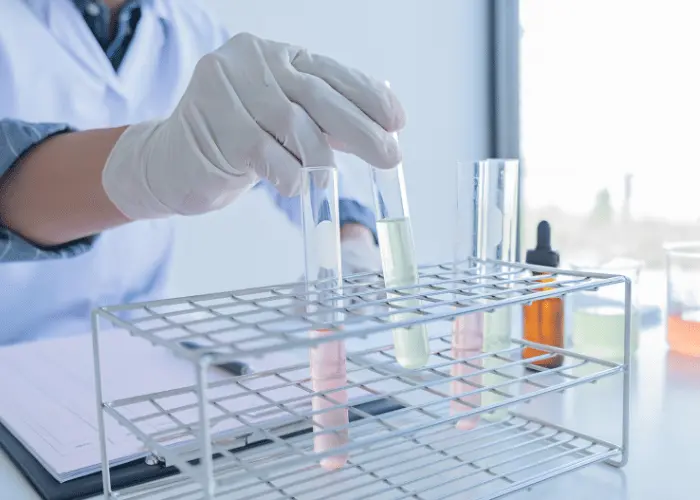
*in vitro: In vitro literally means “in glass” in Latin. In the context of scientific research, it refers to experiments or tests conducted outside of a living organism, typically in laboratory settings. In the case of SPF assessment, an in vitro approach involves testing sunscreen properties, such as transmittance and stability, using equipment and controlled conditions in a laboratory rather than on human subjects. This method allows researchers to gather valuable data about sunscreen effectiveness and durability without the need for human volunteers.
Sunscreen comes in a range of SPF ratings, each offering a different level of UVB protection:
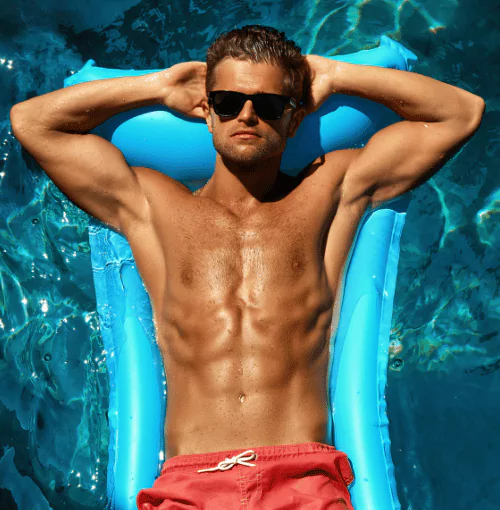


The difference in protection effectiveness between SPF 50 and SPF 50+ is quite small. Choosing a higher SPF might make you feel safer, but the real key is applying sunscreen generously. If you skimp on a lower SPF, your UV protection could take a hit.
Sunscreen products with a protection level between 50 and 59.9 are labeled as SPF 50, while anything above 60 is marked as SPF 50+.
The focus should shift towards diligent reapplication and seeking shade, especially during peak sun hours (10 am – 4 pm).
Many people select a sunscreen based on its Sun Protection Factor (SPF), frequently opting for high SPF products, believing they offer superior defense against the sun’s damaging ultraviolet (UV) rays. However, this assumption is frequently inaccurate.
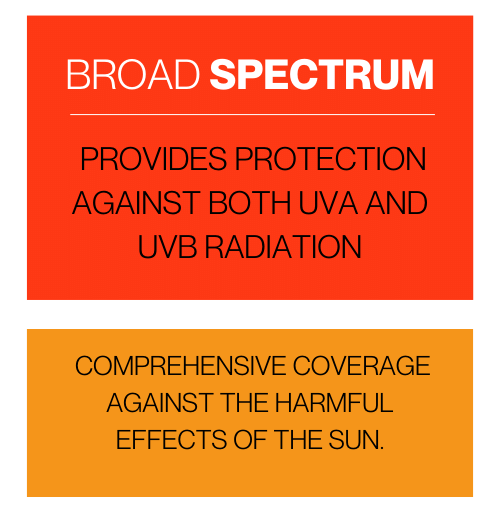
SPF ratings alone, are not a dependable measure of sunscreen efficacy. An effective sunscreen should deliver comprehensive broad-spectrum coverage, safeguarding against both UVA and UVB rays, and should be water resistant when you go swimming.
It should also have a high photostability and contain scientifically proven safe ingredients.

Yet, the SPF value solely indicates the product’s ability to shield from UVB rays, the primary culprits behind sunburn and certain skin cancers like squamous cell carcinoma.
Sunscreens with SPF ratings exceeding 50+ can create a false sense of security among users. Not only do they promise excessive protection, but they may also lead to increased exposure to UVA rays, elevating the risk of cancer.
Numerous studies have indicated that individuals are more prone to misuse high SPF products, potentially subjecting themselves to higher levels of harmful ultraviolet radiation compared to those using lower SPF alternatives.
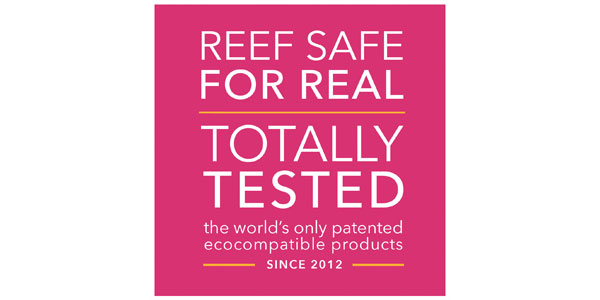




Certain chemicals can trigger allergic reactions in the skin.
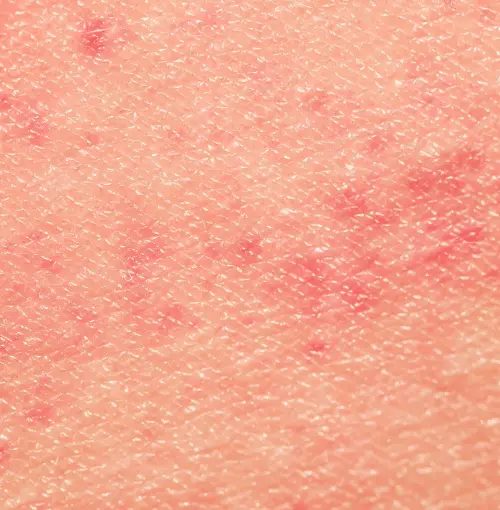
If high SPF products were proven to be more effective in reducing skin damage and cancer risk, the increased chemical exposure might be justified. However, since this is not the case, opting for sunscreens without any harmful chemicals, such as this proven safe free from harmful chemicals SPF 50 is a prudent choice. Aethic offers only sunscreens that are totally safe for your skin and for the ocean!
SPF 50 sunscreen offers high-level protection against UVB radiation. It implies that when properly applied, the skin will take 50 times longer to burn compared to unprotected skin under the same conditions. Aethic’s SPF 50 is used in the the Neom Beach games. Over 1000 athletes choose this proven reef safe, water resistant, high photostable and broad spectrum (3 sun filters) sunscreen for their water sports activities.
However, it’s crucial to note that SPF primarily measures protection against UVB rays and does not account for UVA protection, which is also essential for comprehensive sun protection.

The link between how much sunscreen you use and its Sun Protection Factor (SPF) is key for effective sun safety. Research shows that how well you apply sunscreen directly affects its ability to protect you from the sun.
Typically, SPF guidelines recommend using 2 mg/cm2 to ensure good coverage and a strong protective layer on your skin.
However, studies reveal that people often apply much less sunscreen than what’s recommended for SPF tests, usually using only 0.5 to 1.2 mg/cm2. Surveys worldwide show varying amounts of sunscreen application, indicating insufficient protection against sun damage.
Research in different groups has found that as you apply less sunscreen, the SPF effectiveness decreases, impacting how well you’re shielded from the sun. Even cutting the amount of sunscreen by a quarter can reduce protection against UVA rays.
Studies using simulations stress the importance of applying sunscreen correctly, as using too little may lead to skin redness: (Erythema – redness of the skin which is caused by injury or another inflammation. It often presents itself as a rash, and can be caused by environmental factors, infection, or overexposure to the sun especially with lower SPF products. ) Following the recommended application guidelines can help prevent sun damage, even when using high SPF sunscreens.
In short, when you go to the beach, a 200 ml bottle protects a family of 4 for a day! Adults should use up to 40 ml, (that is about a good adult – sized handful ) and children up to 20 ml.
In scientific terms, SPF values are determined through lab tests that expose skin to UV light to measure how long it takes for skin to burn with and without sunscreen.
.
Every sunscreen consists of 2 components : The active ingredient( or sunfilter) – and the emulsion.
A sunfilter is a vital component found in sunscreen formulations that serves to protect the skin from the damaging effects of ultraviolet (UV) radiation. This essential ingredient works by either absorbing, reflecting, or scattering UV rays to prevent them from penetrating the skin. Sunfilters play a crucial role in shielding the skin against both UVA and UVB rays, helping to prevent sunburn, premature aging, and skin cancer. By incorporating safe and effective sun filters like those in Aethic’s proven patented reef safe formula, individuals can enjoy sun protection without compromising their health or the environment.
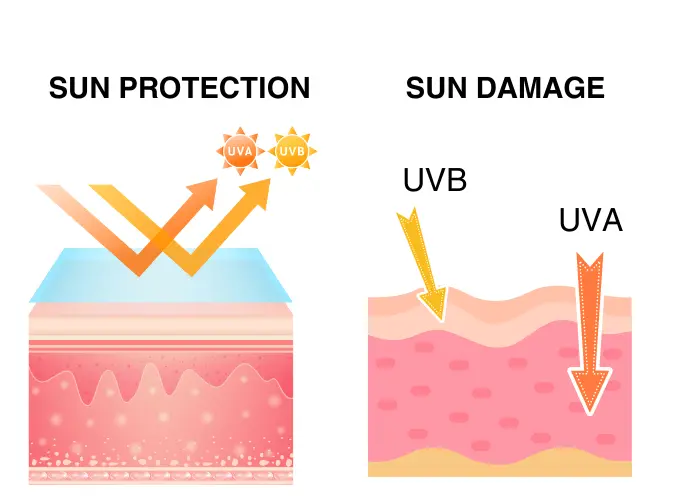
Sunscreens utilize either chemical (organic) or physical (inorganic) components to thwart ultraviolet radiation, which encompasses light with wavelengths shorter than visible light (specifically categorized into ultraviolet A [UVA]1, UVA2, ultraviolet B [UVB], and ultraviolet C [UVC]).
Essentially, the shorter the wavelength, the higher the potential for light radiation to inflict biological harm. Sunscreen filters are proficient in countering UVA1, UVA2, and UVB radiation.
Chemical filters as used in traditional sunscreens, such as oxybenzone, avobenzone, octocrylene, and ecamsule, are aromatic compounds designed to absorb high-intensity ultraviolet radiation, thereby undergoing excitation to higher energy states. Upon returning to their ground states, these molecules disperse the absorbed energy into lower-energy wavelengths, predominantly infrared radiation (i.e., heat).
Many of these chemical filters are toxic to marine life and are proven to cause damage to coral reefs, effectively bleaching it, and thus killing it.

Some, such as oxybenzone are effectively banned in some states, like Hawaii, where many coral reefs need protection.
Aethic uses a revolutionary patented chemical sun filter combination of 3 unique ingredients: Methylene Bis-Benzotriazolyl Tetramethylbutylphenol (nano),Diethylamino Hydroxybenzoyl Hexyl Benzoate, Ethylhexyl Triazone. This combination is scientifically proven to be 100% safe for the marine ecosystem, and it does not damage the coral reef in any way. No other company can use this combination without Aethic’s approval. You can read more about this in our The proof page or in Proven Reef safe sunscreen.
Fact: The giant Nivea/Beiersdorf attempted to prevent Aethic from obtaining this patent for almost 9 years. However, Aethic ultimately prevailed, successfully defending its patent rights.
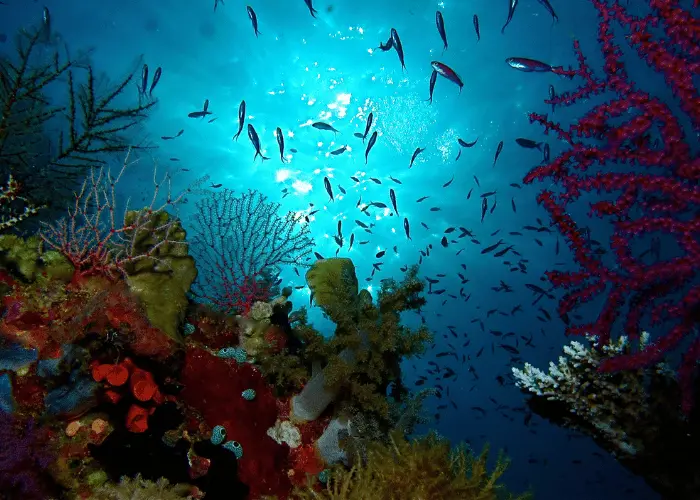
UV “reflectors” are mostly made up of oxides, like zinc oxide and titanium dioxide, that absorb and scatter UV radiation. A lot of research has been done into these minerals as well, and recently it has also been proven that they too cause harm to marine life, and should better be avoided. Most mainstream sunscreens are using these, A new generation sunscreens is emerging, using only chemicals and natural ingredients that are proven and 100% safe for human and marine life.
There is normally more than one and often up to six or more active ingredients in most sunscreens.
The emulsion – the lotion, milk, cream, oil, foam or gel – is what carries the active ingredient. It is usually made up of some combination of oil and water, plus other goodies.
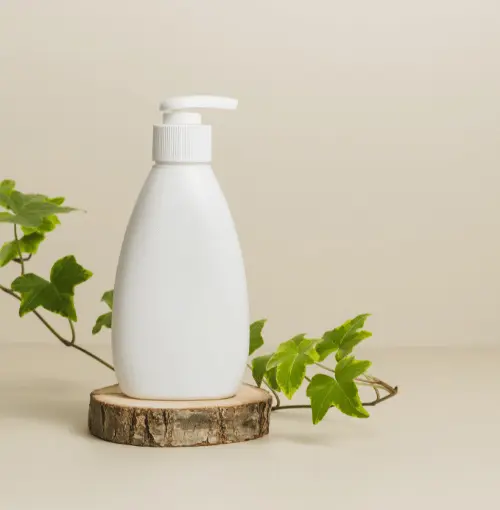
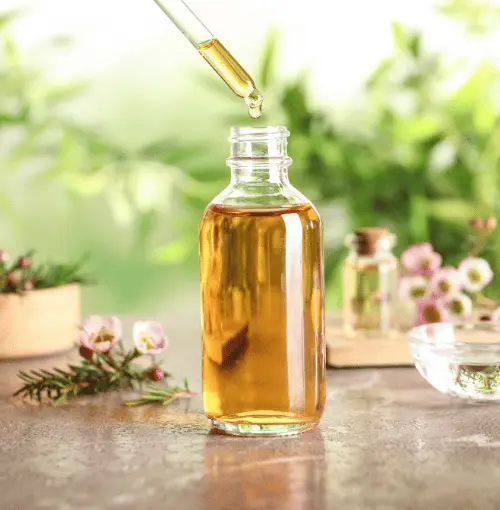
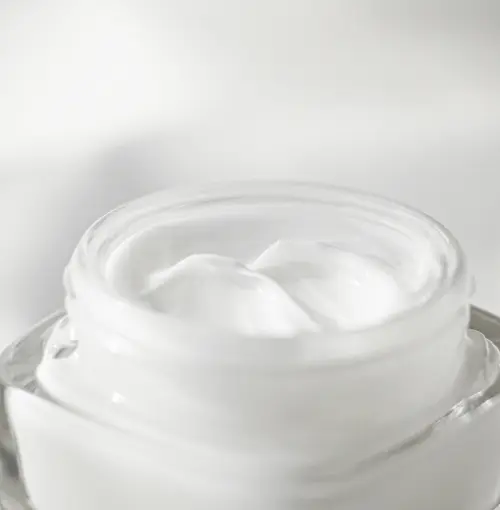
These are important as they preserve the product so it lasts on the shelf or in your cupboard. They also help with water resistance, influence how the sunscreen feels and smells, and how well it binds to the skin.
As of January 2022, revised guidelines for sunscreens in the EU still mandate a minimum level of UVA protection in relation to the SPF. To carry the UVA seal, sunscreens must offer a UVA protection factor of at least 1/3 of the SPF.
This requirement originates from European Commission recommendation 2006/647/EC. The recommendation specifies that the UVA protection factor should be determined using the Persistent Pigment Darkening (PPD) method as modified by the French health agency AFSSAPS (now ANSM), or an equivalent degree of protection obtained with any in vitro method.
Therefore, as of January 2022, this regulation remains in place, ensuring consumers are provided with adequate UVA protection in sunscreens marketed in the EU
The evolution of Sun Protection Factor (SPF) can be traced back to its inception and subsequent developments over the years. The concept of SPF was introduced by Franz Greiter in 1962, a Swiss scientist who created the SPF system to measure the effectiveness of sunscreens in protecting against UVB rays. Greiter’s pioneering work laid the foundation for modern sun protection standards and regulations.

In the 1970s, Rudolf Schulze, a German scientist, further advanced SPF research by emphasizing the importance of broad-spectrum protection against both UVA and UVB rays. Schulze’s contributions highlighted the need for sunscreens to shield users from a wider range of harmful ultraviolet radiation.
Throughout the 20th century, researchers like Albert Kligman and Sheldon Pinnell conducted extensive studies on sunscreen formulations and their impact on skin health. Kligman and Pinnell’s work led to significant advancements in sunscreen technology, including the development of photostable ingredients that offer long-lasting protection against UV damage.
In more recent years, Philippe Autier, a renowned epidemiologist, has conducted influential studies on sun protection behaviors and the efficacy of high SPF sunscreens. Autier’s research has shed light on the potential risks associated with excessive reliance on high SPF products and the importance of proper sunscreen application.
For more information on the scientists mentioned:
One of the hottest and driest deserts in the world is the Atacama Desert in the north of Chile. The challenging environment of Chile’s Atacama Desert offers a landscape akin to that of Mars, making it ideal research ground for NASA for testing and refining various technologies and methodologies.

This region boasts the highest levels of surface ultraviolet (UV) irradiance on Earth, owing to its high altitude, cloudless skies, and thin ozone layer. For effective sun protection in such extreme environments, experts recommend using sunscreen with a Sun Protection Factor (SPF) of 50 or higher. Regular reapplication throughout the day ensures continuous protection against the relentless sun exposure. Aethic would suggest SPF 50 or SPF 50+ as your trusted partner for such extraordinary conditions.
As we embrace the outdoors, SPF 50 stands as a reliable ally for people with sensitive skin, or for those wanting to explore areas with challenging conditions. Aethic’s SPF 50 sunscreen, formulated without harmful chemicals and featuring a patented triple-filter formula for broad-spectrum protection, ensures both the health of your skin and the preservation of precious marine ecosystems.
You’ll be protecting your skin as well as the oceans!